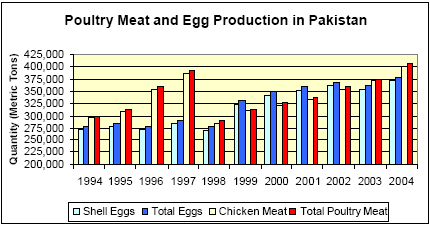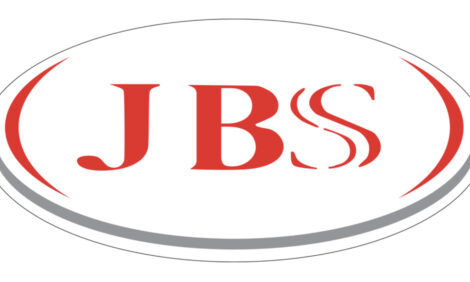



International Egg and Poultry Review
By the USDA's Agricultural Marketing Service - This is a weekly report looking at international developments concerning the poultry industry, this week looking at Pakistans poultry production.
Pakistan Poultry
According to sources, Pakistan's commercial poultry industry got its'
start in 1964 in suburbs around cities such as Karachi, Lahore,
Faislabad, Rawalpandi, and Hyderabad. This industry has seen continued
growth since then, due to various forms of government support,
causing legal problems and the closure and relocation of numerous
facilities.
The poultry industry (i.e. poultry farming, poultry processing, and poultry
feed) was recognized to be part of the food processing industry and
given special considerations accordingly, such as total or partial exemptions
from import duties; sales tax; approval to export table eggs,
day old chicks, and broilers on subsidized rates; and an income tax
holiday for the industry's beginning years.
In view of this assistanace, the commercial poultry industry prospered
and expanded year to year. Since the 1960's there have been numerous
setbacks to producers such as changes in government policies,
low economic returns on products, substandard and costly feeds, an
inefficient marketing system, a costly and inefficient distribution system,
diseases (Avian Influenza in 1994, 2003, and 2004), and other
natural causes. Despite these changes the industry has made great
strides and is expected to grow domestically.
Currently, Pakistan employs a three-tiered system composed of poultry
farmers, commission agents, and retailers. Commission agents
usually get the produce from the farmers at low prices and earn large
profits by selling the same products at a higher price to retailers, who
turn around and mark up products to miffed consumers in wet markets.
The majority of losses occur as a result of birds dying of diseases and
poor handling. Transportation is the most important component in
Pakistan's marketing system. Commission agents and retailers use
various forms of transportation to distribute products to markets (i.e.
bicycle, motorcyle, wagon, and donkey carts.) Higher losses occur
over longer distances, because of bumpy roads and the deficiencies
in modern packing techniques.
Domestic prices of poultry meat, broiler (live,) and eggs, which hit a
nine-month high in December 2004. Due to Eid, a Muslim celebration
marking the end of Ramadan, chicken meat suffered a 30 percent
decline. While prices of most kitchen items in Pakistan remained stable
in January 2005, retail prices of chicken meat dropped from 135 Rupees
(Rs) per kilogram (kg) in December 2004 to 110 Rs by the end of
January (15 percent decline.) Live chicken prices remained between
80 Rs and 85 RS per kg. Prices of broiler chicken hovered between 68
Rs per kg and 75 Rs and largely remained stable. Eggs sold at 40 Rs
per dozen in January and continued steady without experiencing any
significant changes.
Pakistan entered into a preferential trade agreement, SAPTA, which is
expected to grow with the mutual giving of some tariff concessions on
specified items. However, poultry farming operations in Pakistan still
depend solely on imports of all inputs, the bulk of which come from the
U.S. and the U.K. Yet a large trade potential exists for Pakistan with the
SAARC nations (India, Iran, China, and Afganistan,) especially with
India, if Pakistan's poultry industry made some improvements to its
current systems.
In conclusion, Pakistan's poultry industry is looking forward and striving
for modernization and improvements in product quality and price in
order to be more competitive. To achieve this goal industry is pushing
for: a modern packing and distribution system; improved roads; reasonable
price levels for feeds and medicines; establishment of poultry
coordination boards at both provincial and federal levels; a grading
system at the producer level with price adjustments; a long run vaccination
and deworming campaign; the construction of veterinary labs
for drug residue testing; and improved sanitation conditions at both
the production and processing levels.
Source: Pakistan Ministry of Food, Agriculture, & Livestock/Various
News Wires/USDA FAS

To view the full report, including tables please click here
Source: USDA's Agricultural Marketing Service - 8th February 2005








